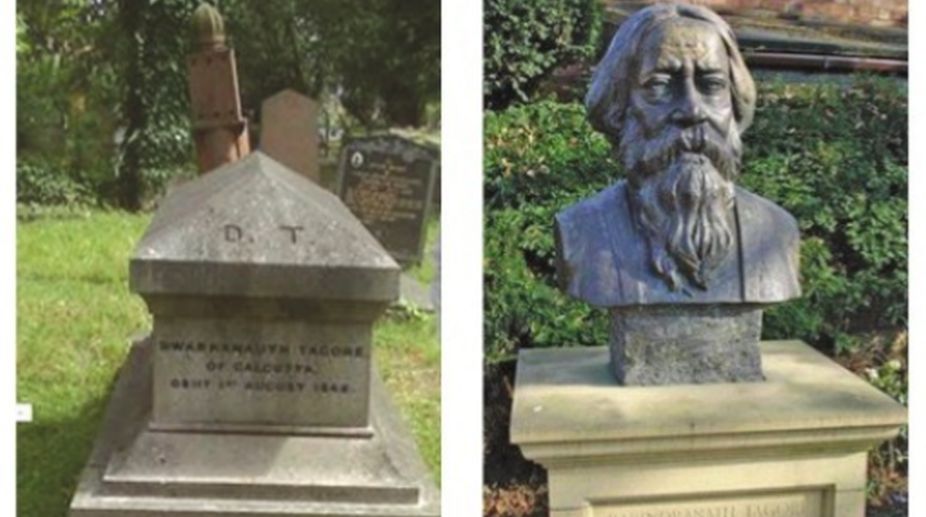Vedanta Aluminium to expand, targets production cost of $600-1,000/ton, new name finalised
The name of the company that would house the company's aluminium business has also been finalised, said a top official of the aluminium business vertical.

Representational Image (PHOTO: SNS)
For over 500 years, the city of London has provided food for thought to Bengali intelligentsia back in Calcutta, now Kolkata. Throughout the duration of East India Company rule in India, there were calls for greater power for Indians in their own land starting from greater autonomy, social justice and finally outright independence. This brought leading intellectuals to London, many of whom finally shaped the famed nineteenth century Bengali Renaissance. This is a journey to some of the less visited places in London which bear the legacy of some hallowed sons of Bengal.
In 1830, the Father of Modern India Rammohan Roy had travelled to London as an envoy the Mughal emperor Akbar Shah II, who invested him with the title of Raja. He stayed in London at the house of Joseph Hare, brother of celebrated Indologist David Hare, in Bedford Square, before moving to Bristol.
While in London, he campaigned on behalf of 1832 Reform Act as well as spread his Unitarian message of Brahmo Samaj in UK, a legacy later carried forward by another stalwart, Keshab Chandra Sen, evidences of which can still be seen at Lewin’s Chapel. West of London, the town of Bristol carries forward the legacy of the Raja even to this day. He died at Stapleton, on 27 September 1833 of meningitis and was reburied at the prestigious newly built Arnos Vale Cemetery in southern Bristol in an ornate mausoleum designed byWilliam Princep and funded by Prince Dwarakanath.
Advertisement
The Raja is celebrated in Bristol, with a nine feet statue on College Green, close to Bristol Cathedral where the annual commemoration happens in September every year.
Entrepreneur, philanthropist and the leading force behind the first joint stock commercial bank in India (Union Bank), Prince Dwarakanath Tagore was known in Britain for his lavish parties with royalty and generous donations to charities. He had an untimely death at the age of 52 in 1846 in the company of just two members of his huge family – a son and a nephew at Brown Hotel in central London. It is said that Queen Victoria had sent four carriages for his last journey- quite a princely send off.
Dwarakanath rests in peace at the prestigious Kensal Green Cemetery at a simple grey grave which sadly never got visited thereafter by most of his illustrious descendants due to family strife.
Our journey takes us to Heath Hampstead in north-west London which hosted grandson of Dwarakanath and perhaps the most celebrated son of India, Rabindranath in 1912. The poet philosopher had brought with him English translations of Gitanjali which he read out to his friends including WB Yeats, CF Andrews at this residence.
Interestingly soon after his arrival in UK, the Bard had left the attaché case containing the only manuscript of Gitanjali on the Underground train from Charing Cross. Finally this got recovered from the Lost Property office of the London Underground the following day and the rest is history! Asia got its first Nobel Laureate in 1913. Tagore enjoys his pride of place at the birthplace of England’s own Bard, William Shakespeare at Stratford upon Avon. The gardens host a bronze bust of Tagore with an ivory tablet of his poem written in 1916 to mark the Tercentenary of Shakespeare’s death.
Indian nationalist and Hindu philosopher Aurobindo Ghosh spent his formative years at Shepherd’s Bush, London. Son of a noted Indian Civil doctor, Aurobindo attended school at St Pauls from 1884 and was known for his rare talent especially in languages and history at a tender age. He later secured admission to Cambridge and passed ICS successfully before joining the freedom movement in India. His brother Manmohan Ghose, an 1890’s poet was actively associated with the Rhymers’ Club (known for its aestheticism).
Staying with nationalists in London was the founder president of Indian National Congress and a distinguished son of Bengal, WC Bonnerjee. An accomplished barrister, Bonnerjee, to further his career, bought a large house at Croydon in 1890 which he named Kidderpore, after his Kolkata house’s locality. While his paternal house in Kolkata (Girish Park) is in shambles now, London’s Kidderpore House where Bonnerjee lived until his death in 1902 survives the test of time gloriously.
The last leg of this tour brings us to Pimlico off the Victoria station which hosted the monk philosopher Swami Vivekananda in 1896. His brother Mohendra was in London to study law and Vivekananda joined him in summer to spread the message of Vedanta philosophy conducting numerous classes amongst his students and disciples the most noteworthy being Margaret Noble (later Sister Nivedita). He was able to capture many minds with his non-sectarian universal message of truth.
Calcutta being the capital of imperial India, London has welcomed Bengalis with open arms. Various corners of the city still bear testimony to their achievements which later sowed the seeds of modern independent India. As eminent historian Sir Jadunath Sarkar(1928) noted, “The greatest gift of the English (to India) is … the Renaissance which marked our 19th century. Modern India owes everything to it”.
Advertisement